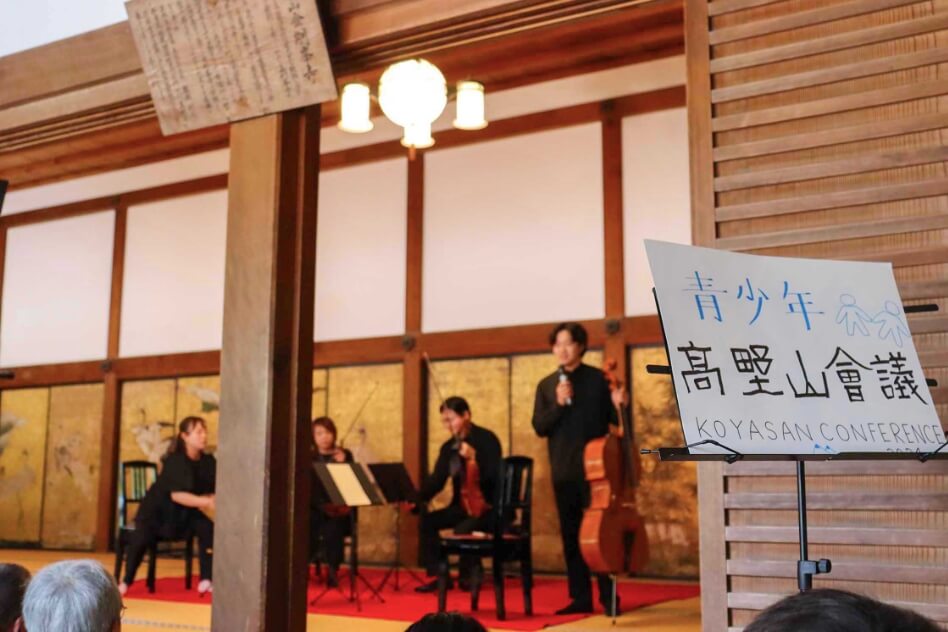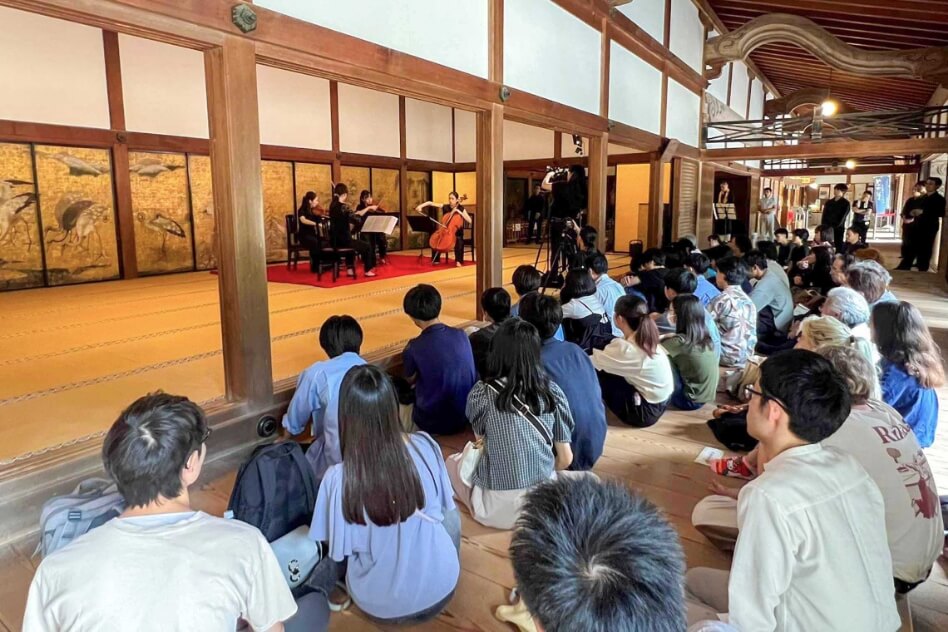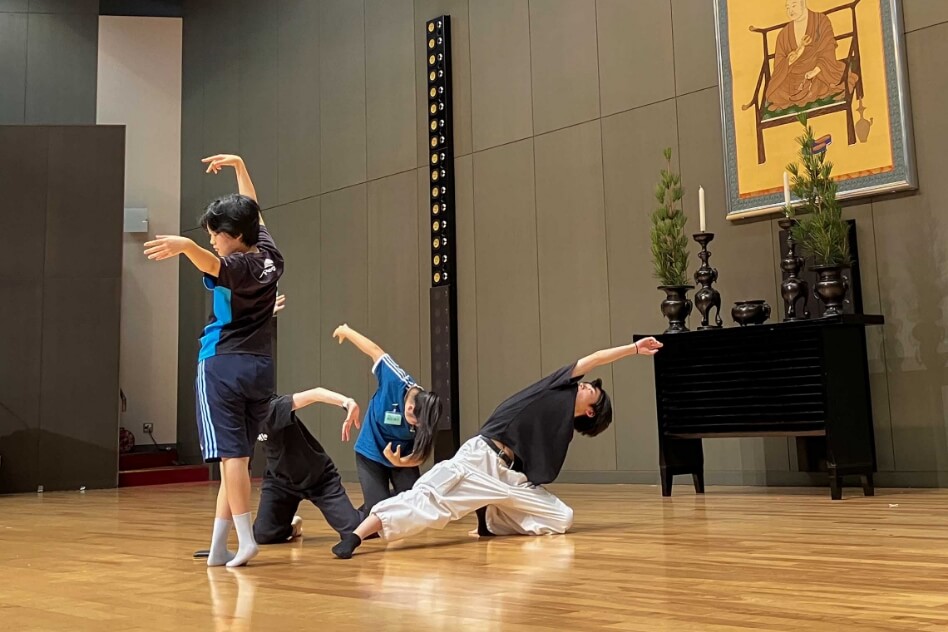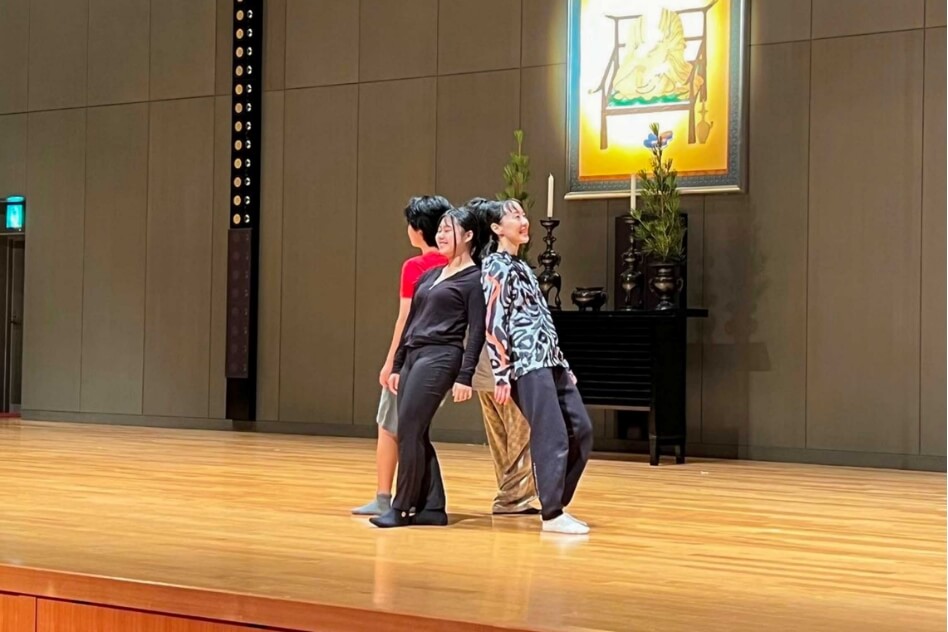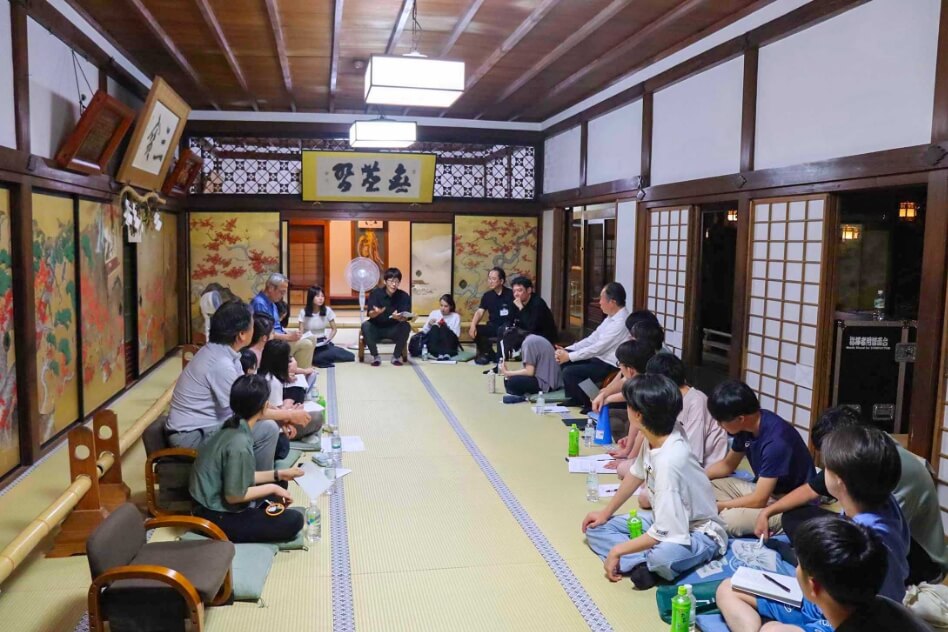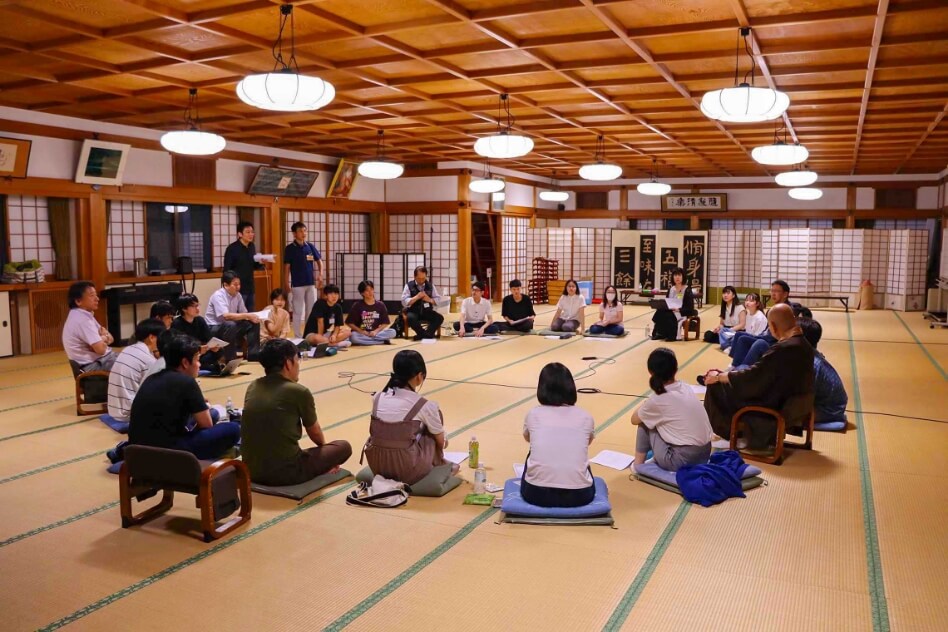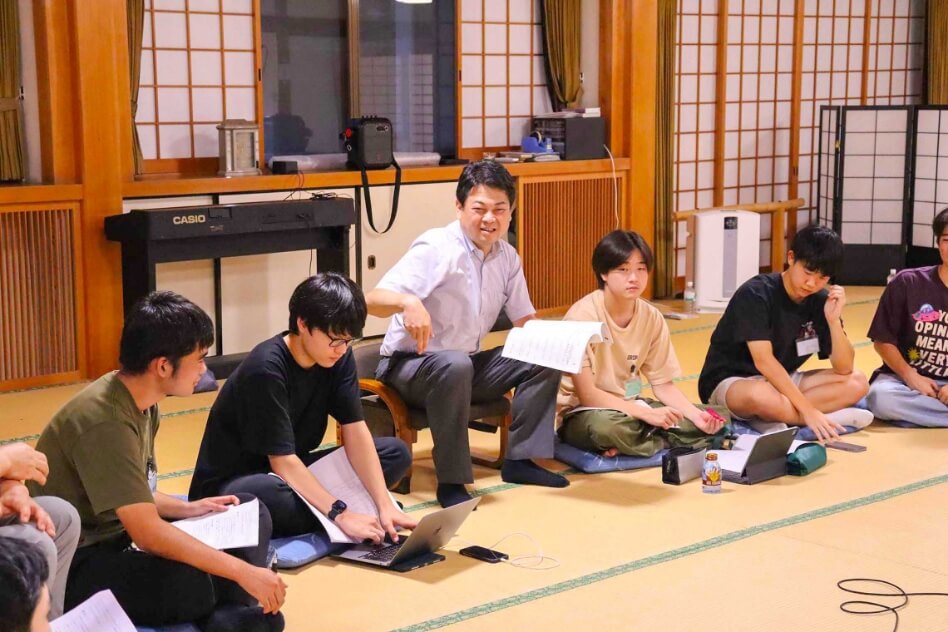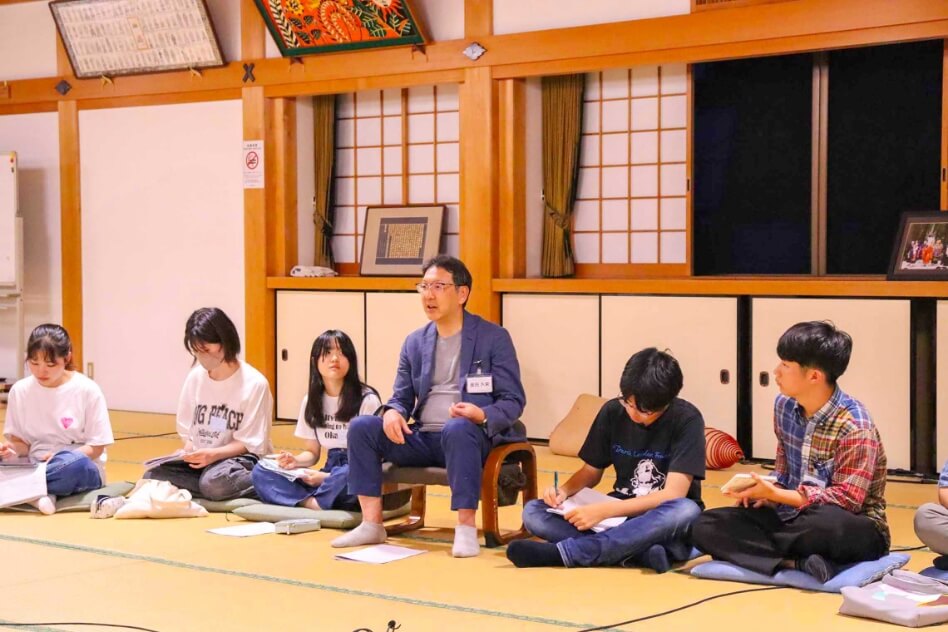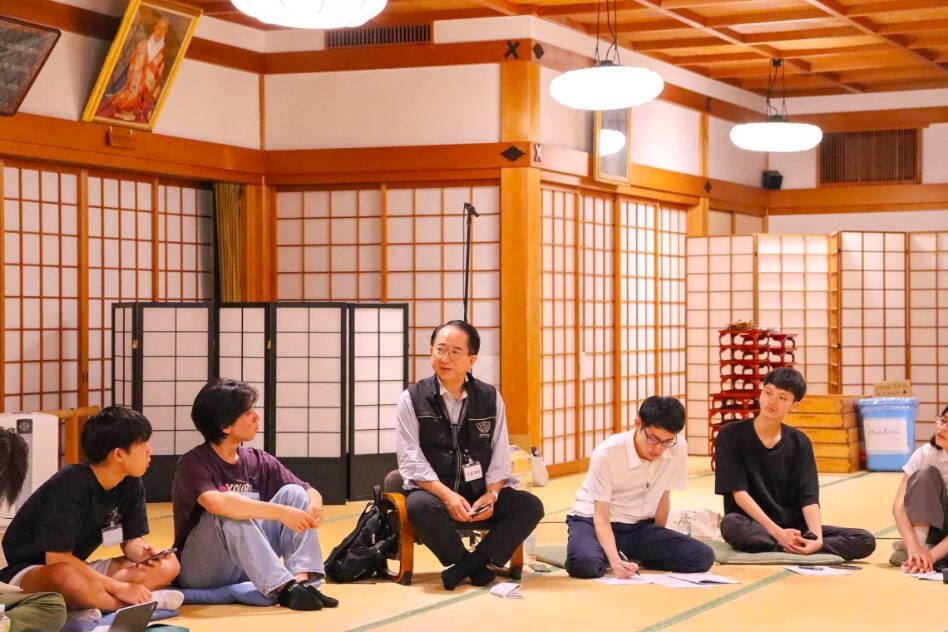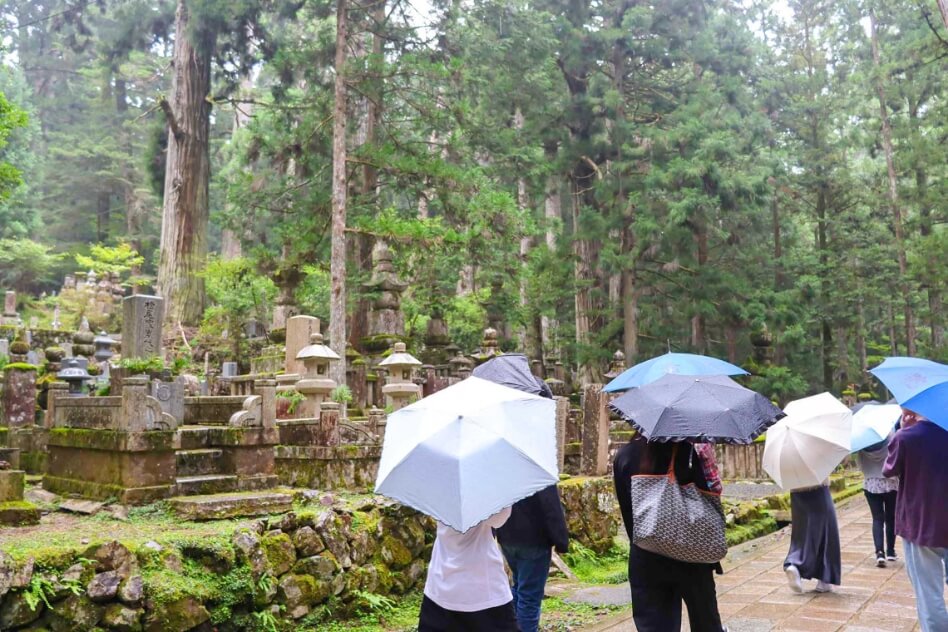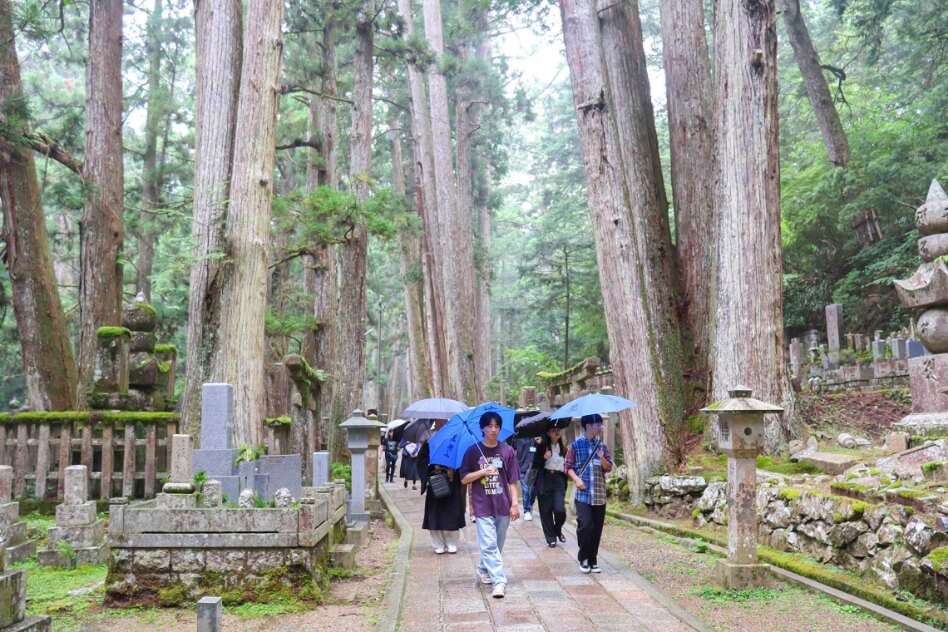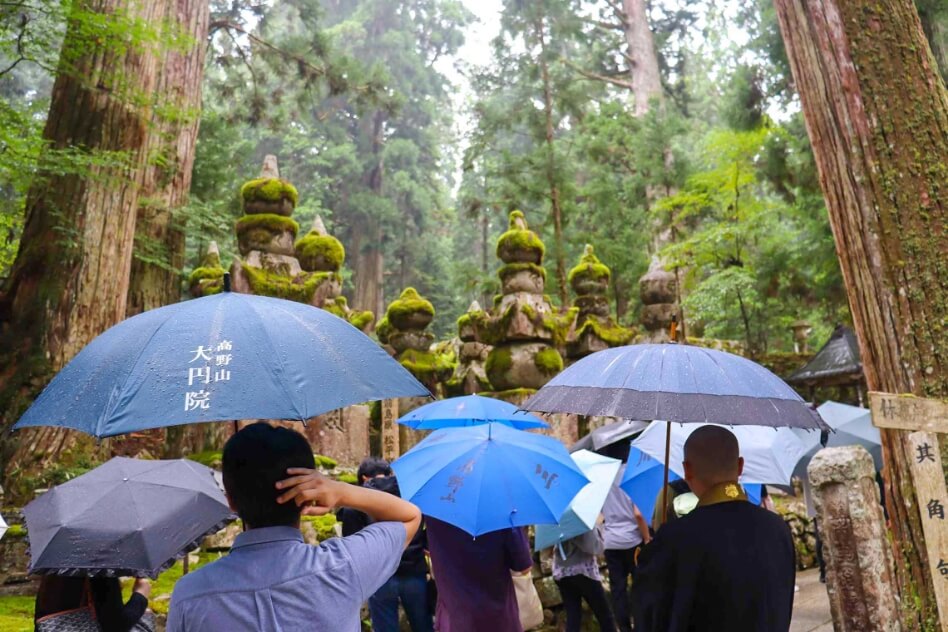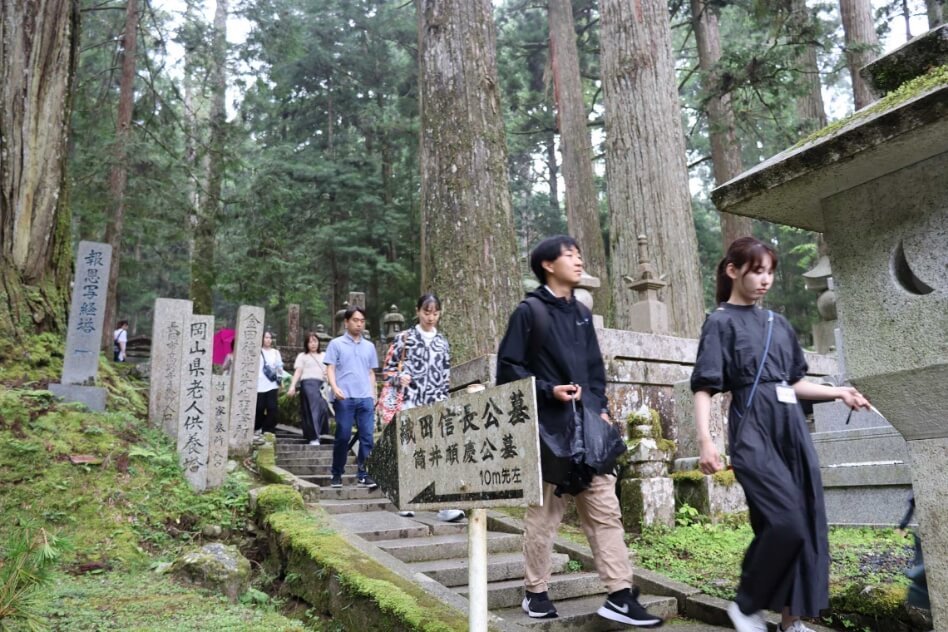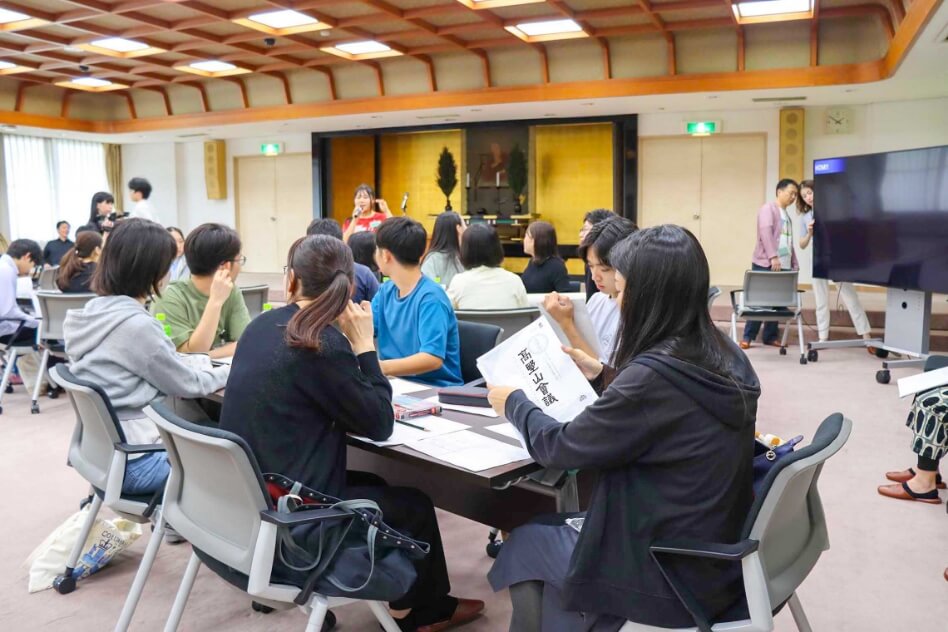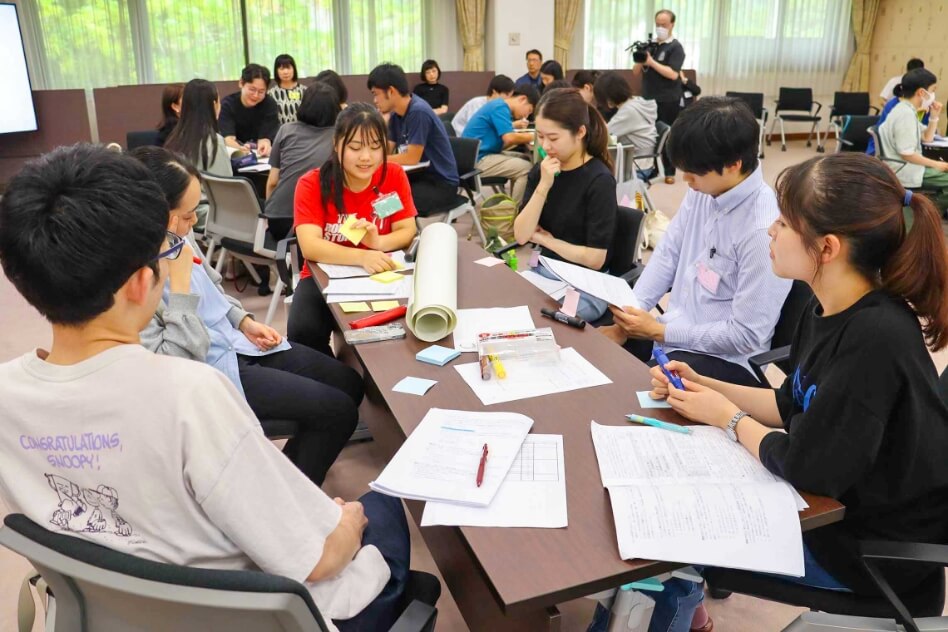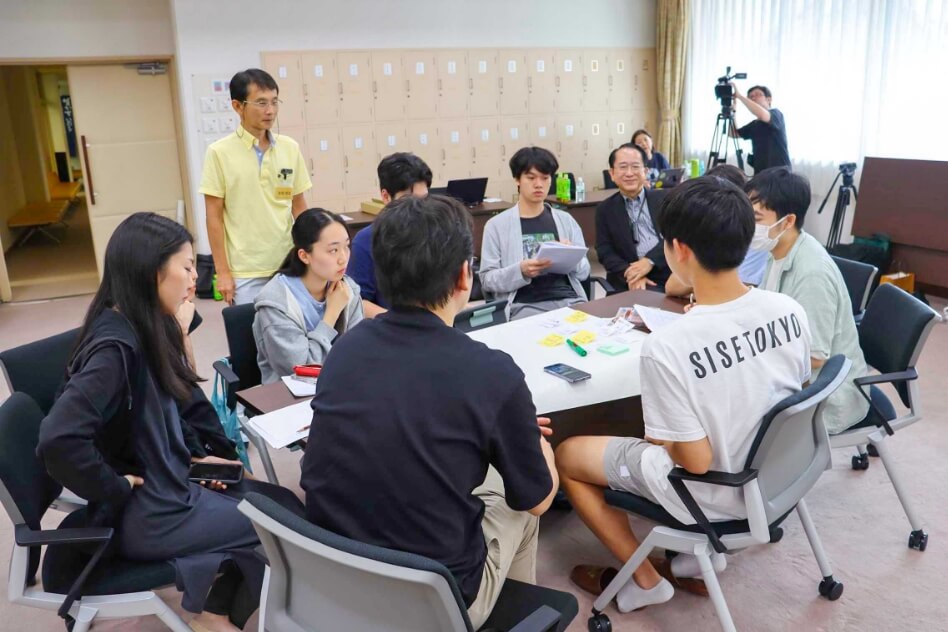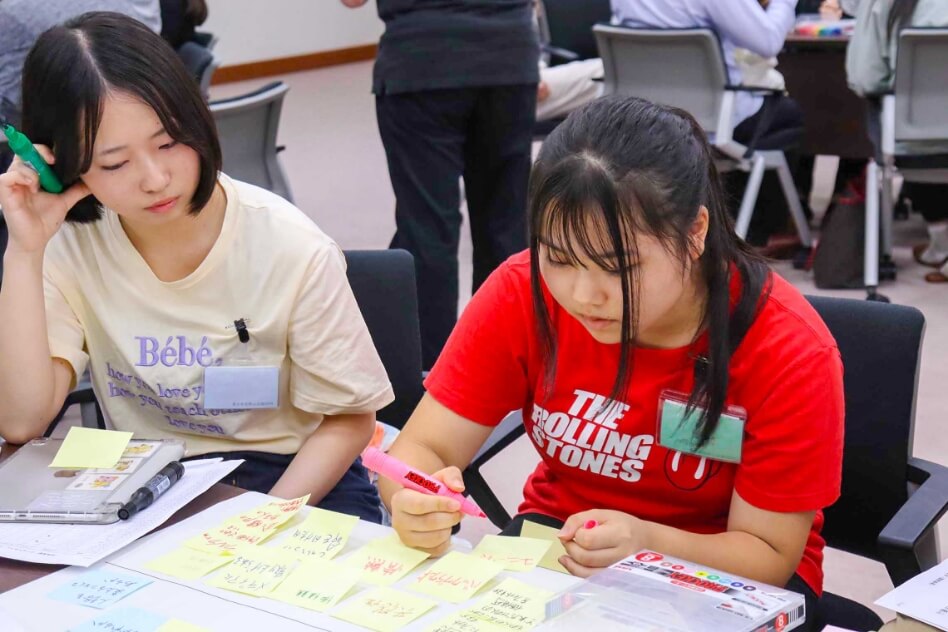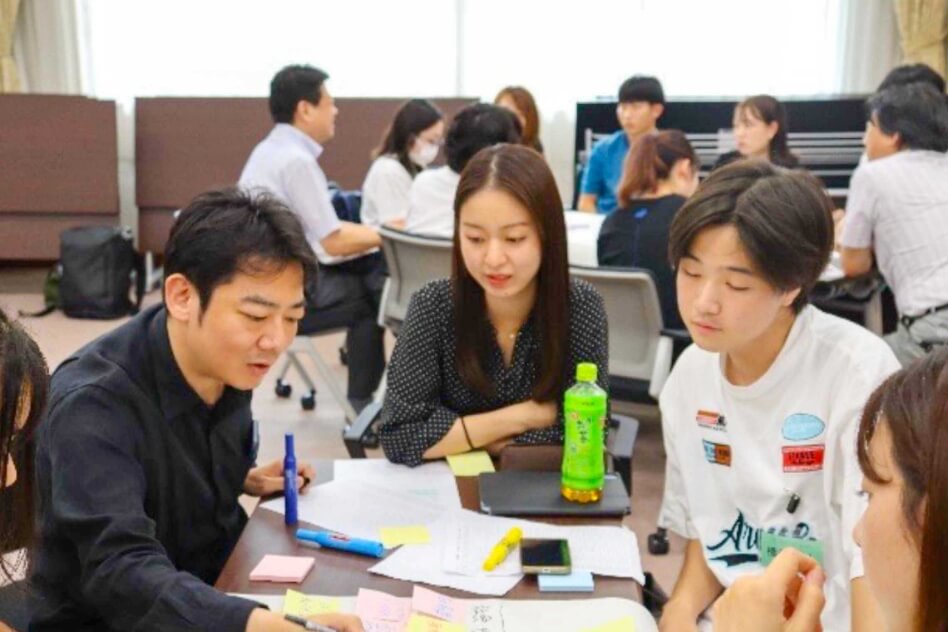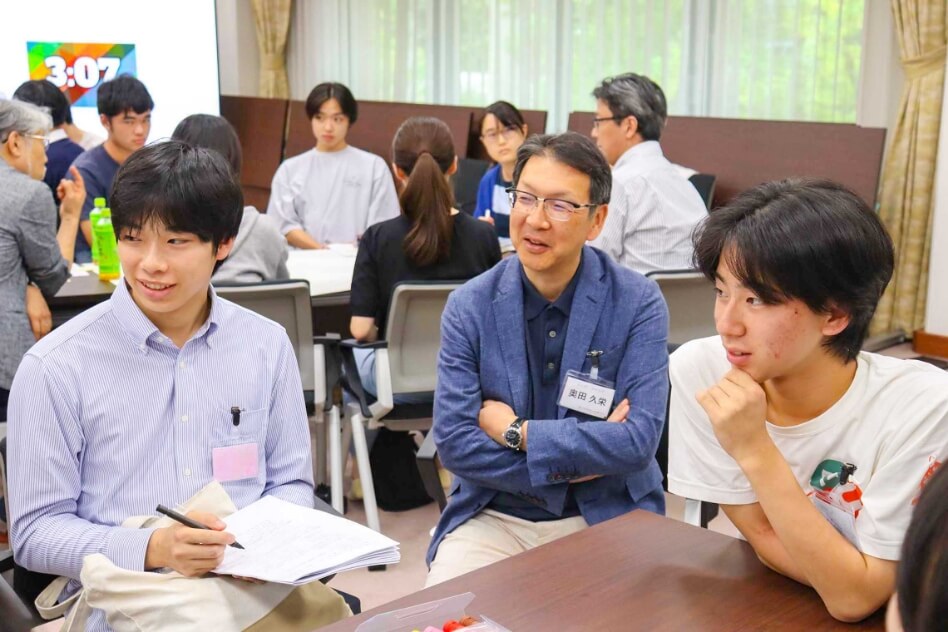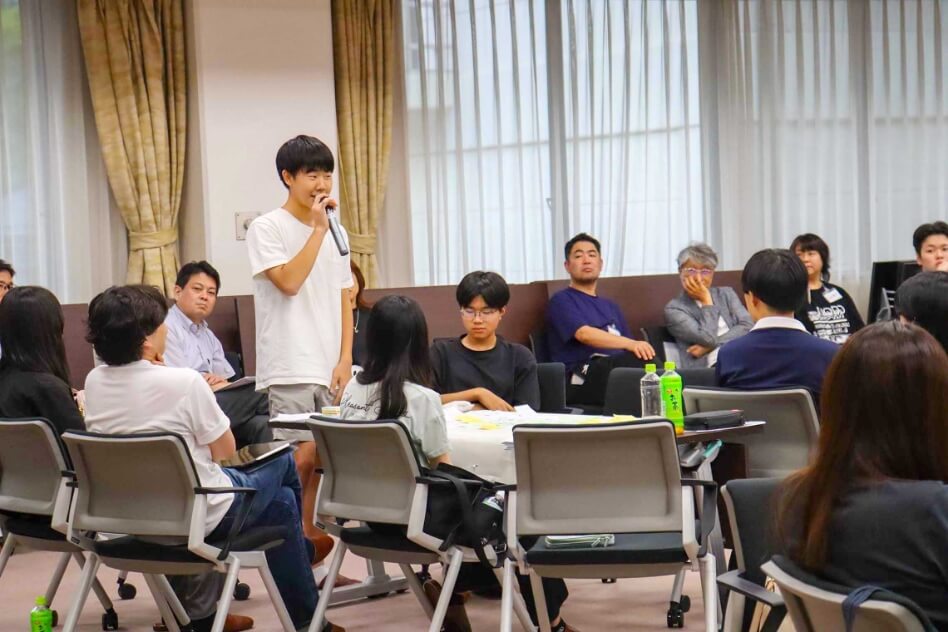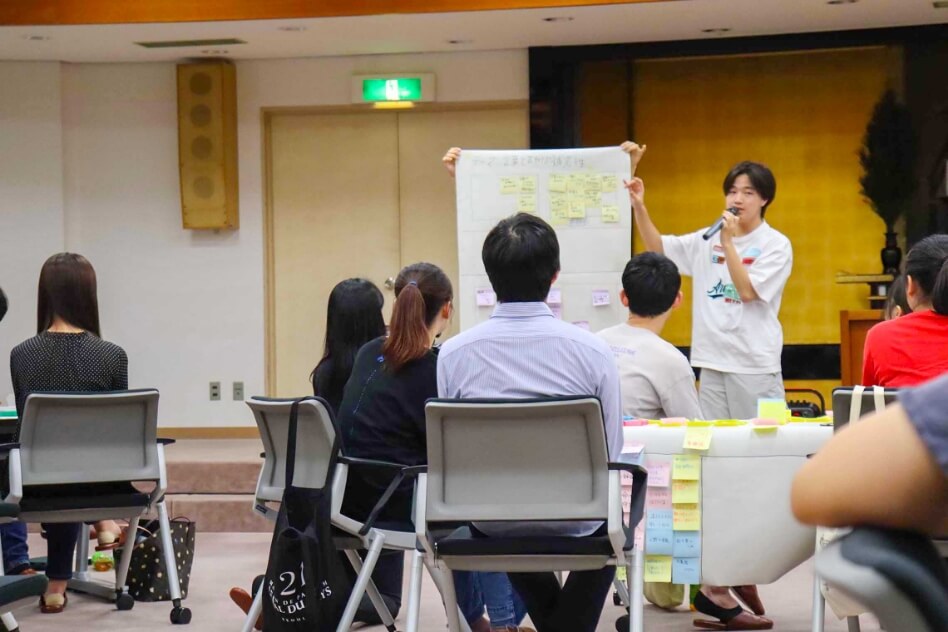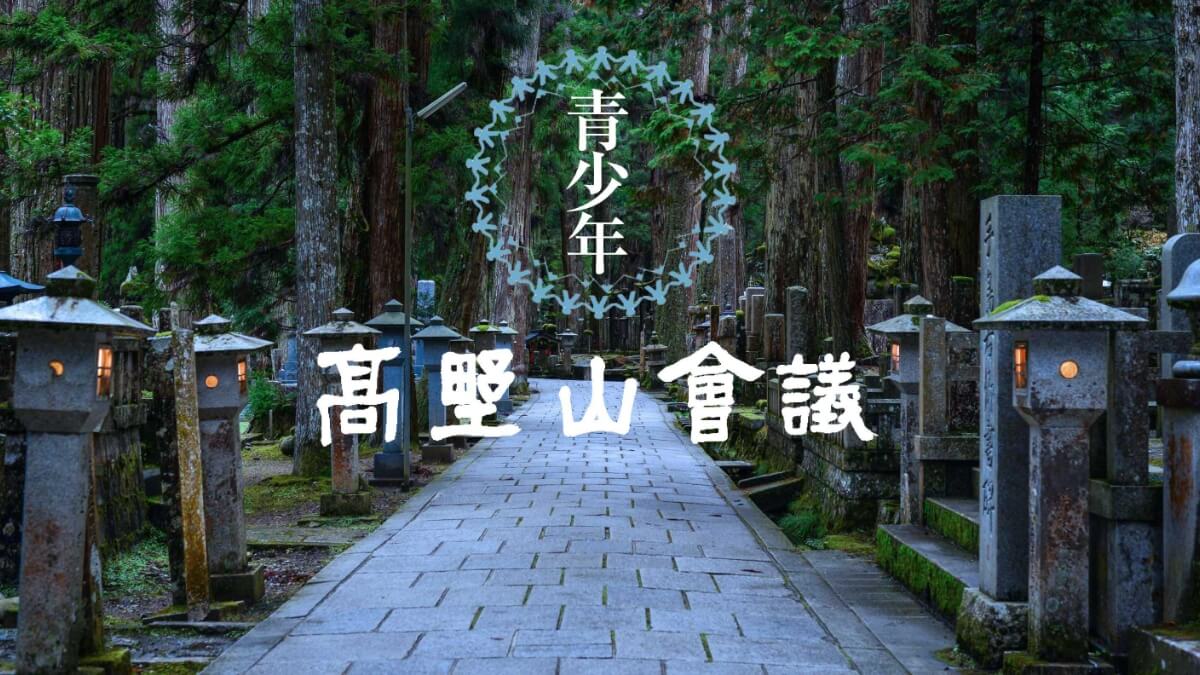
Shaping a Brighter Future: Innovation Through the Youth Koyasan Conference
20 December 2024
JERA, with Japan’s largest power generation capacity and one of the world’s top fuel handling capabilities, is committed to its mission of “providing cutting-edge solutions to the world’s energy issues.” As part of its efforts, the company is dedicated to ensuring a stable power supply while achieving zero CO2 emissions by 2050, combining renewable energy with low-carbon thermal power. However, the energy landscape is growing increasingly complex and uncertain due to the intertwined forces of climate change, poverty, and geopolitical risks. In this era of ambiguity, JERA remains steadfast in its commitment to creating innovations to open frontiers, namely new value. The company defines “value creation” as identifying key challenges and delivering solutions to shape a world where happiness is attainable for all. One such initiative is the “Youth Koyasan Conference,” co-hosted with the University of Tokyo’s Research Center for Advanced Science and Technology (RCAST).
We spoke with Tetsuo Yoshida, driving JERA’s Enterprise Value Creation Department, to explore the organization’s value creation initiatives and the impact of co-organizing the Youth Koyasan Conference.
INDEX
Expanding Horizons Through Diverse Perspectives
What is the Koyasan Conference? Over 1,200 years after Koyasan’s establishment, this unique academic forum brings together experts and thought leaders from a range of fields—including science, the arts, and philosophy—to envision the world another 1,200 years into the future. Through meaningful dialogue, the conference fosters the blending of diverse perspectives and ideologies to create new value. Since its inception in 2021, the conference has been hosted annually by RCAST. In 2024, RCAST and JERA collaborated to launch the Youth Koyasan Conference, recognizing the importance of involving young people—the leaders of tomorrow—in shaping this vision. Designed as a youth-focused counterpart to the original Koyasan Conference, the program incorporates STEAM education to empower the next generation.
“STEAM education” is the acronym for an interdisciplinary approach that integrates Science, Technology, Engineering, Arts, and Mathematics. It focuses on developing creativity by uniting the intellectual disciplines of science, technology, engineering, and mathematics with the emotional and expressive richness of the arts. This innovative method seeks to bridge perspectives across disciplines, applying artistic sensibilities to identify societal challenges and explore solutions.
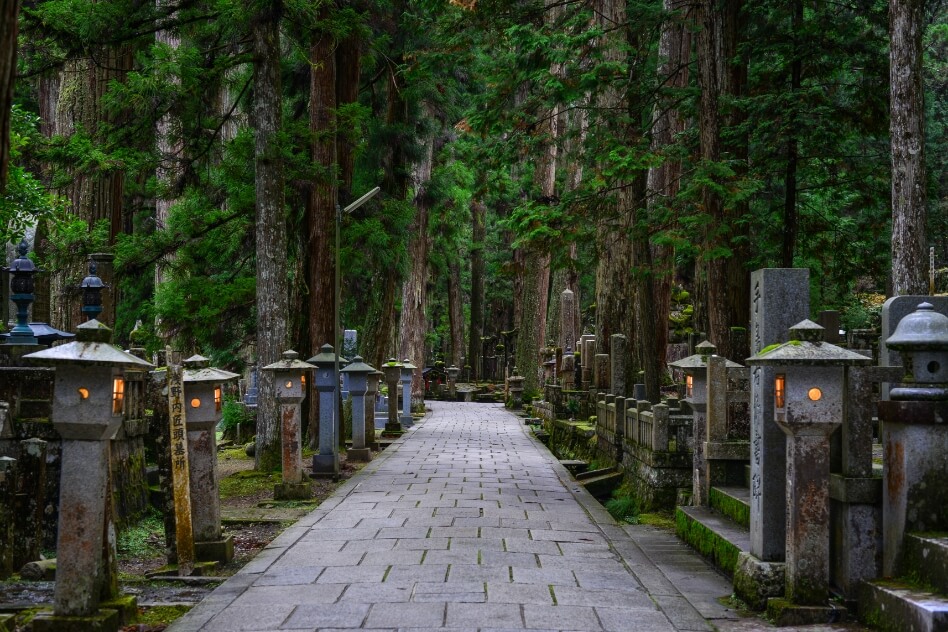
Okunoin, Koyasan
In April 2024, approximately 40 high school and university students from general education and music programs, and also supporters from JERA to learn with these students, gathered at the University of Tokyo’s Campus to engage with experts from a wide range of fields. The lectures covered diverse themes, spanning environmental factors such as diet, energy, climate change, and conflict, alongside topics that shape the human experience, including art, culture, physical expression, neuroscience, and the ways people interact with AI and disabilities. As part of the program, participants enjoyed a rare opportunity to listen up close to a live string quartet performance. This experience aimed to highlight the rich diversity of perspectives that influence human understanding and the interplay of vastly different interpretations.
Glimpses of Value Creation at the Youth Koyasan Conference
Following the lectures at the University of Tokyo’s Campus, on August 18, 2024, participating students ascended Koyasan, Mount Koya, in Wakayama Prefecture, joined by leading expert researchers, artists, philosophers, and JERA employees. The researchers brought expertise spanning climate change, international security, neuroscience, and advanced art. Complementing this intellectual depth were artists with diverse talents, including musicians, opera singers, and ballet dancers. Over four days, participants engaged in dialogue that broadened their perspectives and fused diverse viewpoints and ideas.
The conference at Koyasan was structured around two main parts: elective exercises and group exercises. To start, participants chose one of three courses: music, dance, or roundtable discussion. During the first two days, students immersed themselves in their chosen course, sharpening their sensibilities through discussions and exercises led by experts and professionals.
In the latter half of the program, participants were divided into six groups for the group exercises, where they synthesized their observations, conversations, and experiences at Koyasan to tackle the profound, unanswerable question: “What is art?” Tetsuo Yoshida, from JERA’s Enterprise Value Creation Department, reflected on the group exercises as the conference’s main event.
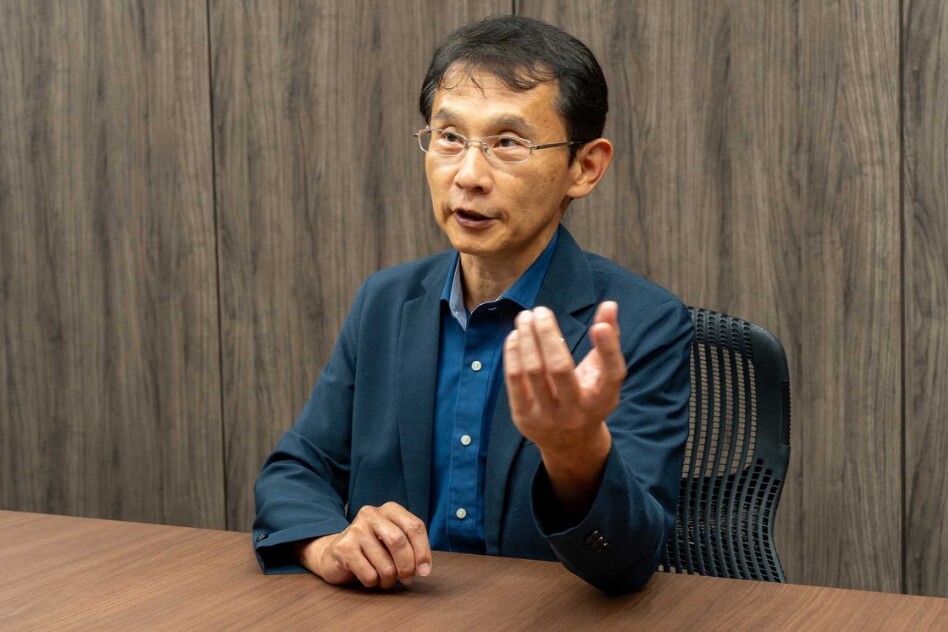
Tetsuo Yoshida, Executive Expert (Enterprise Value Creation)
“Interestingly, each of the six groups came up with entirely different answers. “For instance, one group analyzed art through the lens of brain function, another defined art as a means of communication, and yet another compared art and language. What matters is not which answer is correct— the true value lies in how individuals from diverse backgrounds came together, debated, and integrated their perspectives and processes to generate new ways of thinking. Listening to other teams’ presentations allowed participants to discover ideas and viewpoints they hadn’t considered before. This exposure to new perspectives and values made it easier for innovation to flourish.”
This encapsulates the vision JERA had for the Youth Koyasan Conference—a model for generating innovation through diversity.
Both youth and adult participants experienced how the beauty of diversity gave rise to new values and shared these reflections on their time at Koyasan:
“Even when someone’s opinion doesn’t align with my own, it’s not wrong—it’s a key to unlocking new ways of thinking.”
“We often talk about diversity, but I realized just how far we are from achieving true diversity of thought.”
“My viewpoint shifted after identifying societal challenges and collaborating with people with diverse perspectives, making even complex issues feel more personally relevant.”
Music Course
With the guidance of experts like Tokyo University of the Arts Professor Emeritus Kazuki Sawa, participants performed string quartets and quintets at Kongobuji Temple, sharing their music with the general public.
Dance Course
Led by Yui Yonezawa, a principal dancer at the National Ballet of Japan, participants explored physical expression and performed dance routines set to a live string ensemble during their final presentation.
Roundtable Discussion Course
Experts and scholars—including Masakazu Sugiyama, Director of RCAST, University of Tokyo, and an authority on energy systems; Yu Koizumi, Associate Professor at RCAST, University of Tokyo, and an expert on international security; Hideaki Koizumi, RCAST Fellow, University of Tokyo, and a brain science specialist; culinary researcher Yoshiharu Doi; Kaoru Kondo, concertmaster of the Tokyo Philharmonic Orchestra; and Ryusho Soeda, President of Koyasan University—all joined JERA employees and students in the spacious temple lodgings to engage in spirited discussions on a variety of topics, among them debates about nature of humanity.
Walking Around Okunoin
Participants took a contemplative walk through Koyasan’s Okunoin, a two-kilometer stretch lined by more than 200,000 gravestones. Among the graves are those of notable historical figures such as Oda Nobunaga, members of the Toyotomi clan, and Akechi Mitsuhide—renowned warlords of Japan’s Sengoku period. The site also includes tombs of Imperial family members, nobles, feudal lords, and commoners. Regardless of their social standing, beliefs, or deeds in life, all are equally embraced at Koyasan, symbolizing its enduring philosophy of universal acceptance and inclusivity.
Why JERA Co-Hosts the Youth Koyasan Conference
Today’s energy challenges often surpass the capabilities of conventional approaches. Additional challenges continue to emerge, compounding an already complex landscape.
“Thirty years ago, the energy industry’s primary concern was electricity shortages. A decade later, the focus shifted to high cost of power generation. In recent years, reducing carbon dioxide emissions has become an additional and urgent priority.”
The industry now grapples with a trilemma of maintaining a stable power supply, ensuring affordability, and achieving decarbonization—objectives that frequently conflict with one another. However, Yoshida insists the challenges don’t end there.
“Looking ahead, we only expect more challenges to arise. If we only react to emerging issues, we risk not only failing in our mission to deliver cutting-edge solutions but also jeopardizing the long-term sustainability of our business. Tackling latent issues requires a different approach—one rooted in “creative sensitivity,” which forms the foundation of imagination and insight. Traditionally, society has relied on logic-based thinking to solve problems by focusing on observable phenomena. Yet, as the complexities of society grow, so too do the intricacies of the challenges we face. Relying solely on logical thinking—what we call “intellect”—is no longer sufficient to identify or solve these issues. We need talent capable of integrating diverse forms of intellect with creative sensitivity to uncover hidden issues, propose innovative solutions, and create lasting value.”
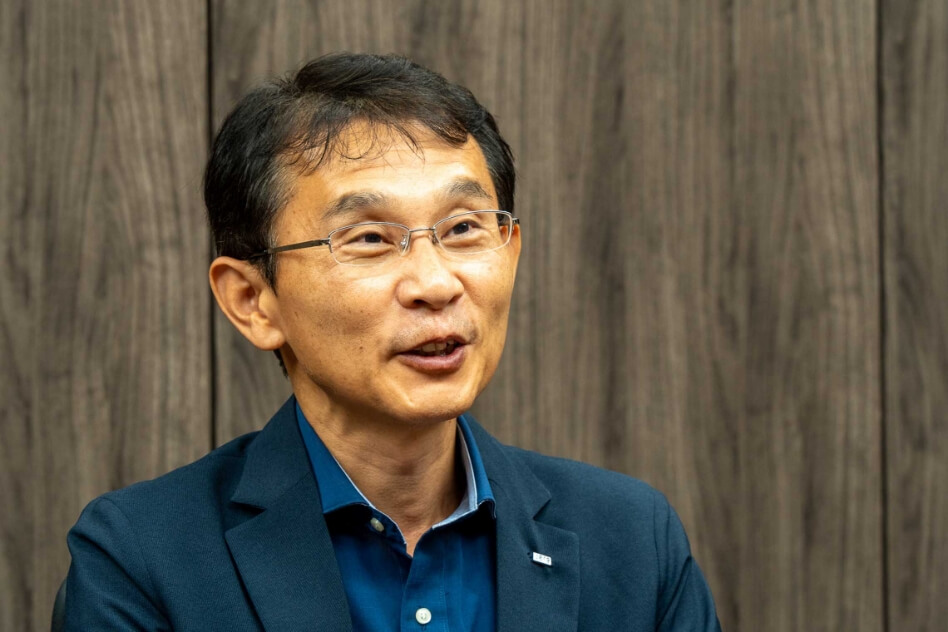
Yoshida offers examples of innovation born from the fusion of intellect and creativity. The theory of relativity, for instance, exemplifies how intuition can lead to groundbreaking discoveries. Albert Einstein, a renowned theoretical physicist, was also an accomplished violinist, and it is said that his musical ideas helped him conceptualize the theory of relativity, transcending conventional understandings of time and space. Similarly, Steve Jobs, the founder of Apple, drew inspiration from Japanese ukiyo-e woodblock prints for the now-ubiquitous computer “icons.”
According to Yoshida, the Youth Koyasan Conference is one framework designed to refine creative sensitivity and integrate it with diverse forms of intellect. As previously noted, the conference brings together individuals from a variety of fields to engage in meaningful dialogue. By merging artistic perspectives—expressions of creativity—with scientific and business viewpoints grounded in logic and intellect, the conference seeks to inspire new ways of thinking and uncover pathways to addressing complex challenges. JERA is committed to fostering innovation at this intersection of diverse intellect and sensibility.
“Driving innovation at the crossroads of intellect and creativity is not a challenge exclusive to JERA. It is a vision that society as a whole must embrace to build a prosperous future, supported by frameworks for innovation that are accessible to all. As a company dedicated to addressing global challenges and creating a better future for all, JERA aims to play a dual role: contributing to the development of these frameworks while also benefiting from them.”
“Of course, these frameworks won’t produce immediate results,” Yoshida acknowledges, but he sees promising early outcomes from the inaugural Youth Koyasan Conference.
“What’s crucial is to continue these efforts and turn them into a framework for creating values. By bringing together individuals from diverse backgrounds to address contemporary social issues, we aim to explore the reactions that occur when these differing perspectives collide. Additionally, we want to identify the methods and approaches needed to develop talent capable of driving such reactions. Looking ahead, we hope to involve more JERA employees as well as participants from a wide range of companies and organizations, equipping them with fresh perspectives. I hope this initiative inspires participants to become catalysts for positive change and innovation within their workplaces.”
Established just last year, the Enterprise Value Creation Department marks the beginning of JERA’s journey in value creation. While still in its early stages, JERA is building a solid foundation—one that unites internal and external expertise with creativity to pioneer cutting-edge solutions and shape a sustainable future.
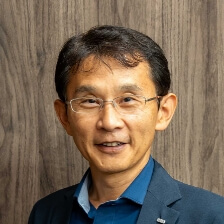
Tetsuo Yoshida
Enterprise Value Creation Department
Yoshida joined Chubu Electric Power in 1993. From 2015 to 2018, he played a pivotal role in the establishment and expansion of JERA Americas LLC in Houston, Texas. In 2020, he served as the Senior Supervisor of JERA’s Corporate Planning Group and Finance & Accounting Group before becoming Executive Officer, Head of the Financial Strategy and Planning Division. He has been in his current position since April 2024.
RELATED STORIES
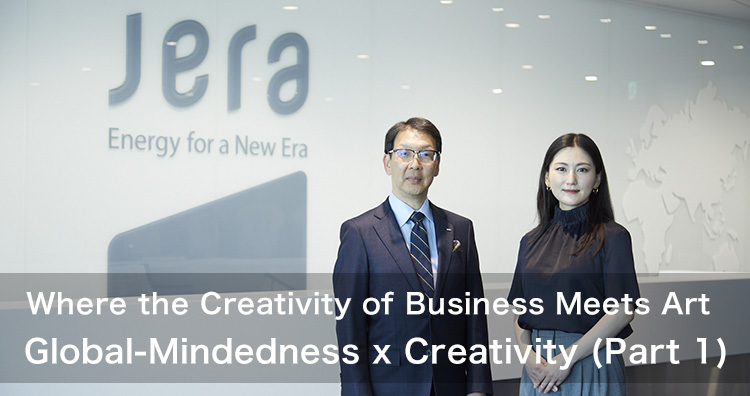
Where the Creativity of Business Meets Art Global-Mindedness x Creativity (Part 1)
First of all, I am very honored to be able to speak with you today. But this is not the first time we’ve met.
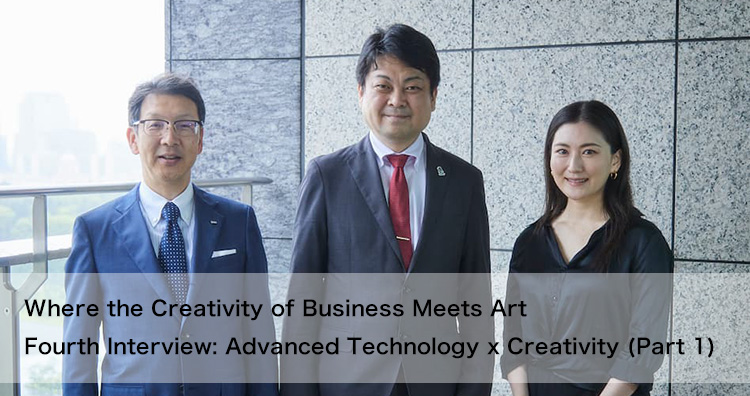
Where the Creativity of Business Meets Art Fourth Interview: Advanced Technology x Creativity (Part 1)
Today, we're honored to have Dr. Masakazu Sugiyama, Director of the Research Center for Advanced Science and Technology…

Where the Creativity of Business Meets Art Sixth Interview: Communication × Creativity (Part 1)
Today, we are joined by Dr. Mari Yoshitaka, a leading expert in environmental finance in Japan. Dr.


